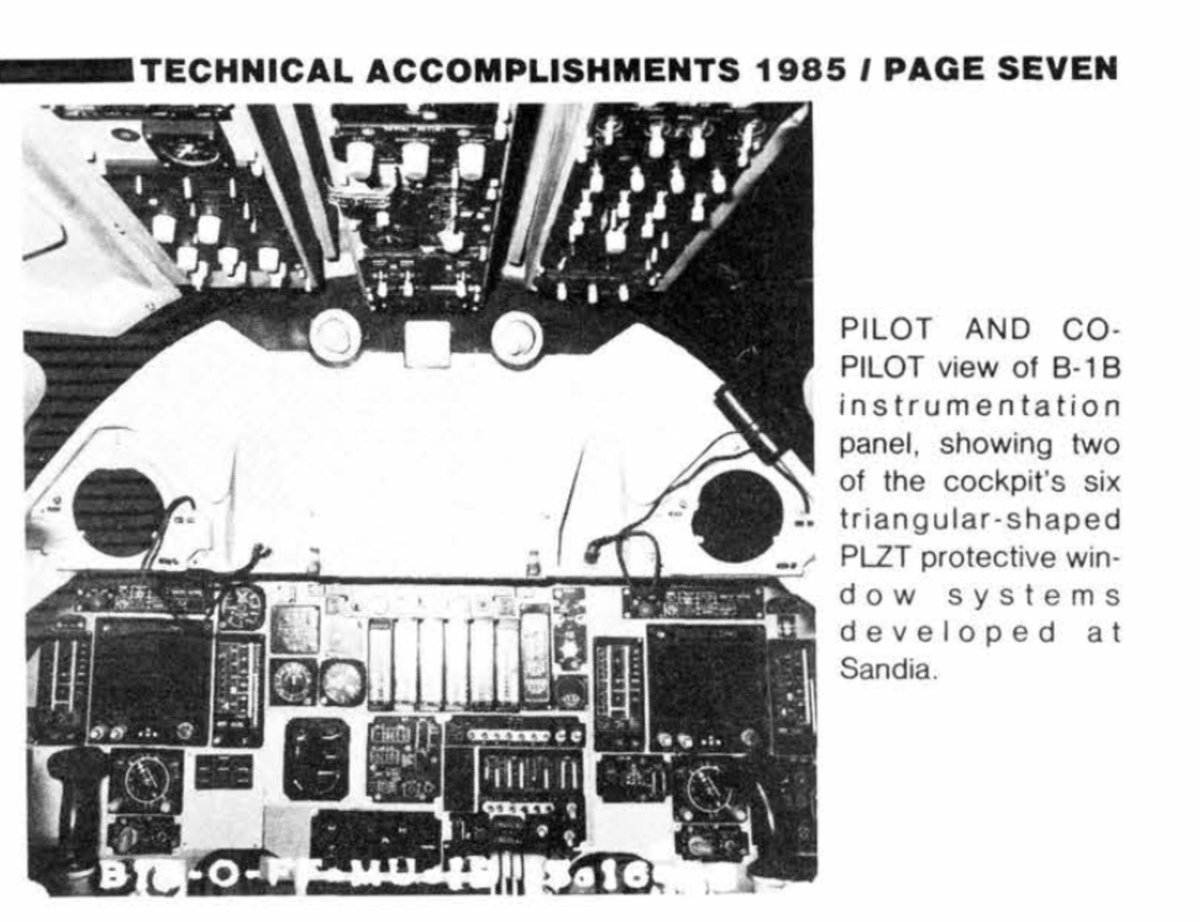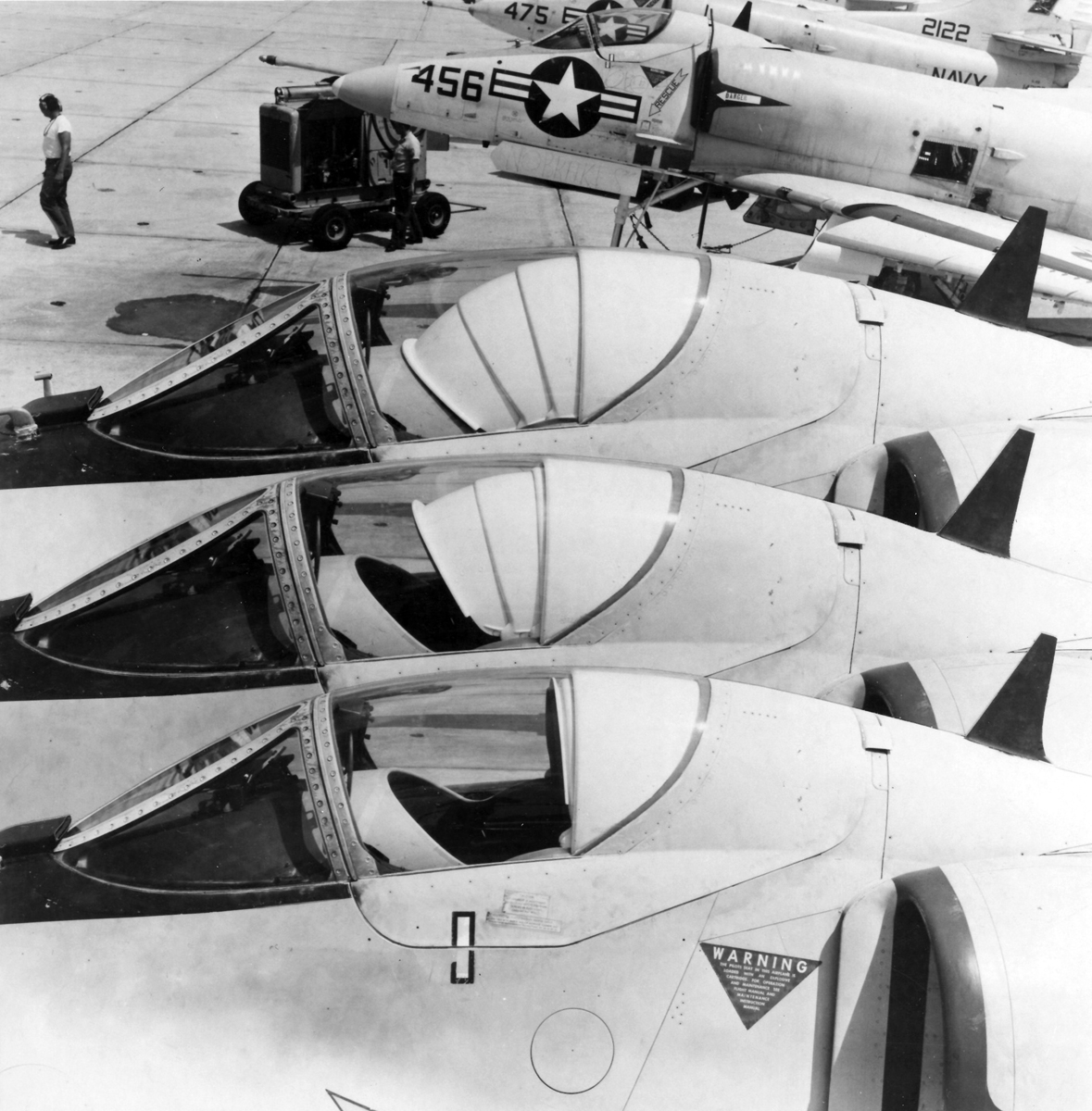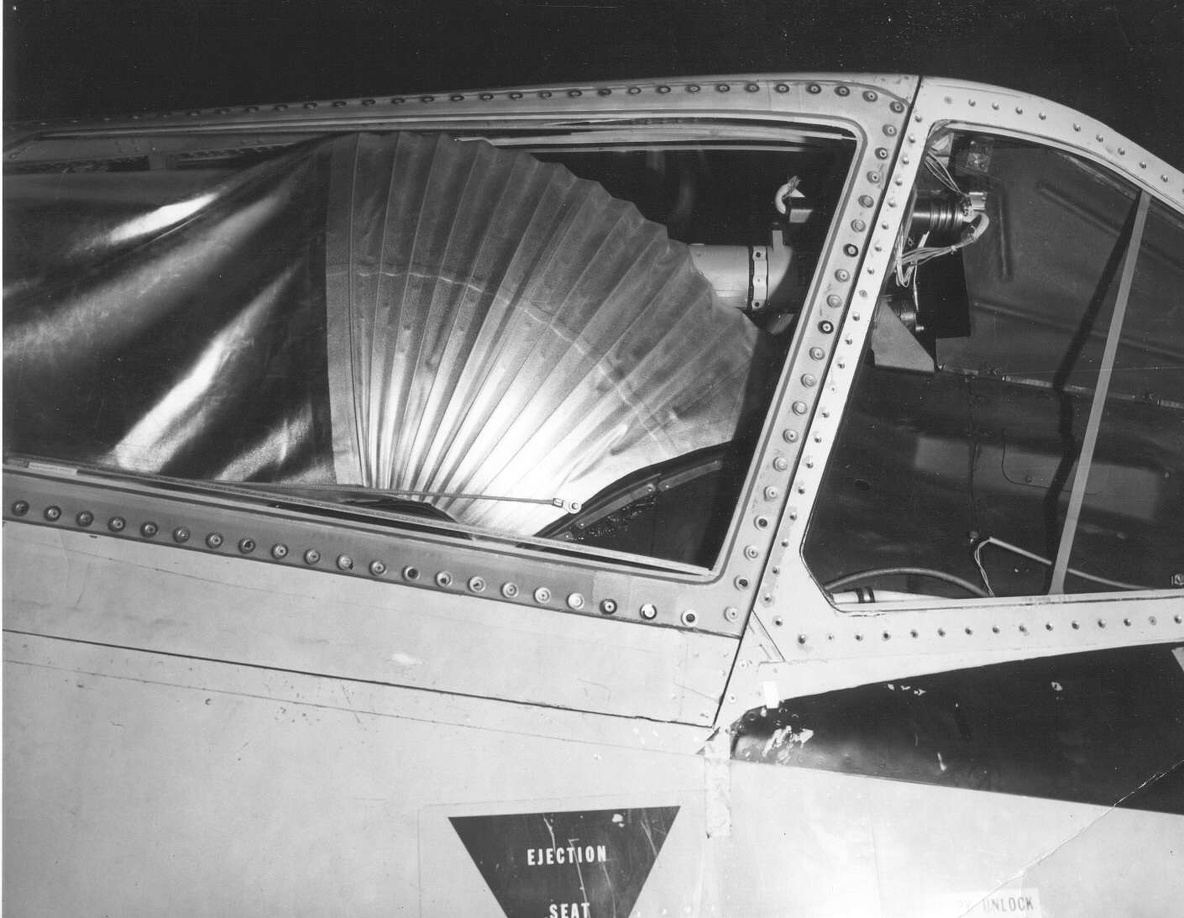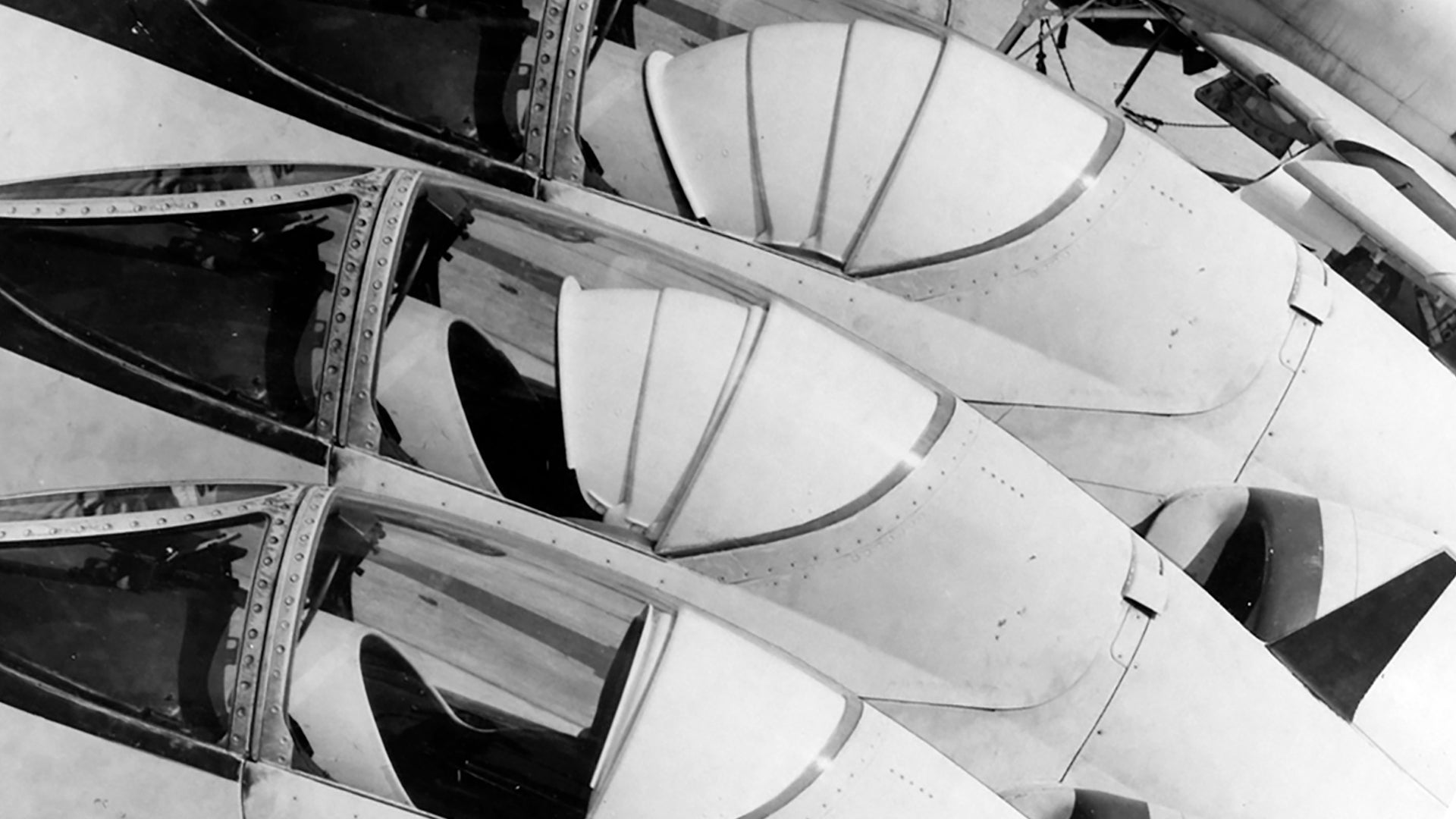So much odd, but awesome tech came out of the Cold War. It seems like every day I find something new that is equally fascinating and alarming about an era when nuclear Armageddon seemed consistently immanent. The nimble little A-4 Skyhawk’s clamshell thermal shield is a great example of this.
The ‘Scooter’s’ Thermal Anti-Radiation Heat Shield was fitted around the edges of the rear portion of its notoriously cozy cockpit during nuclear missions. The clamshell design could be pulled down, covering the pilot entirely, but allowing them to still see the instrument panel and access the flight controls. The system would not only keep the pilot from being blinded by the super-bright flash of a nuclear explosion, but it would also give them shielding against the high heat that resulted from it, and to a lesser extent, it would lower the overall amount of other forms of radiation the they would be exposed to.

The shields were deployed operationally aboard aircraft carriers, along with tactical nuclear gravity bombs that the Skyhawks would haul into a combat zone and loft at targets before escaping the area as fast as possible. Lay-down and medium to high altitude dive bombing methods were also available, but less desirable, especially the latter. Here is a U.S. Navy video circa 1959 explain how the subsonic A-4 would use each of these methods to deliver a nuclear weapon:

The need to protect pilots from the bright and hot flashes of nuclear weapons detonations resulted in a variety of solutions throughout the Cold War. These included nuclear thermal curtains installed on aircraft like the B-52s and the Polarized Lead Zirconium Titanate (PLZT, pronounced “plizzit”) flash blindness goggles introduced in the early 1980s for FB-111, B-52, KC-135, B-1, and eventually B-52 crews. Today, the B-2 uses a temporarily installed fast-tinting shield system mounted on its instrument panel dash that is based on technology originally developed for the B-1B to protect its crew during nuclear missions. You can read all about these wild contraptions in this past article of ours.

But for the size of the Skyhawk and the era in which it entered into service, the thermal shield was an amazingly simple, easy to use, and highly effective countermeasure.

Other tactical aircraft from the era employed various thermal shielding techniques, with most using more malleable curtain assemblies and less than ergonomic helmet systems, although photos of these configurations are rare. Here’s one design tested in an F-106 cockpit:

The need for such a system was fairly pressing in the era when the A-4 entered service. Whenever a U.S. carrier would get into an area where they would be part of the Single Integrated Operational Plan (SIOP), the shields were at the ready for installation along with nuclear gravity bombs or aircraft were preconfigured and armed at the ready for contingency missions.

By the late 1960s, the A-4 gave up its nuclear role, but would continue to serve the Navy in various roles for decades after. Still, throughout the Cold War, American carriers would house tactical nuclear weapons onboard. Some set sail with over 100 nuclear bombs in their weapons magazines. A number of these weapons were lost at sea during the period. The practice only came to an end in 1992 after President George H.W. Bush commanded the draw-down of all tactical nuclear weapons from the surface warfare community. By 1994, even the ability to fire nuclear weapons would be forfeited by U.S. Navy ships, with the submarine force taking over the role completely.

In 2010, the ability for submarines to fire nuclear-tipped Tomahawk land-attack cruise missiles also came to end. All this could change once again as the Navy looks to bring tactical nuclear weapons back to its surface and submarine fleets as part of a new Pentagon strategy to counter threats from Russia and China. It is even possible that the F-35C will gain nuclear capabilities in the coming years. It’s unclear how its pilot would be shielded if the type gained a nuclear capability, but it’s not like making the jet able to fight in nuclear, chemical, and biological warfare environments isn’t already a key component of the program. Relegating delivery to the lay-down method alone and/or using long fusing times is another possibility, giving the aircraft as much time as it needs to safely exit the danger zone.
Regardless, it’s clear that Douglas designers were very concerned with the ability for A-4 pilots to execute the nuclear delivery mission in a number of ways and survive to fly again the next day. Looking back, the thermal anti-radiation heat shield appears to have been a fairly clean and ergonomic way of going about for the period.
Contact the author: Tyler@thedrive.com
